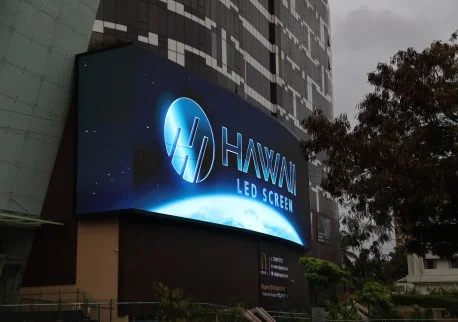Blog Details
Discover the Power of Fixed LED Screens in Kochi

- Posted On 05 Apr 2024
#ledvideowall #rentalledScreen #advertisingleddisplay #outdoorledscreenkochi #ledscreenkerala #leddisplay #leddisplayscreen #leddancefloor #toprentalledscreen #8x12ledwallsindia #8x12ledwallschennai #ledweddingstage #fixedledscreenkochi #videoledwallstamilnadu #LedwallKerala #topgproseries #bestledscreenmanufacturers #ledwallsupplierBanglore #advertisingleddisplay #videowallmanufactures #P3ledwallsmanufactures #bestP3ledwalls #ledscreenservice #topvideoledwalls #indoorledvideowall #outdoorledwall #outdoorledwallkochi #ledwallsupplierHyderabad #leddisplaymanufacturescalicut #ledvideowallcalicut #ledwallKochi
While creating to install an fixed LED screen , one of the most important factors is the location and environment in which it can be placed. This critical phase is doing an extensive examination of numerous surroundings in order to ensure the longevity and optimal performance of the LED board. Firstly, the proper placement of the LED screen is essential. Whether it's an indoor setting like a shopping mall, corporate office, or event venue, or an outdoor one like a highway billboard or a stadium, the setting is essential in determining the usability of the fixed LED screen in Kochi.
In addition, possible exposure to dirt, pollution, and water should be considered when determining the level of protection required for the LED screen. Outdoor LED screens in urban locations may be damaged by transport chemicals and industrial operations, demanding additional safeguards to ensure peak performance and longevity. When selecting an LED screen type for install in Kochi, it is necessary to consider surroundings such as direct sunlight, temperature fluctuations, and accidental dust or moisture exposure. Businesses and organizations that carefully assess these components may ensure the durability, reliability, and performance of their LED screens, maximizing their investment and increasing the visual experience for their audience.
When choosing the size of an fixed LED screen, it is critical to consider the viewing distance and available space to provide best visibility and readability for the audience. This procedure entails carefully assessing elements such as installation height, viewing angles, and distance from which the content will be viewed. The visual separation is the distance between the audience and the LED screen, and it provides an essential part in determining the correct screen size. A greater viewing distance requires a larger screen size to keep the content visible and legible to the audience.
Given such factors, it is critical to identify the ideal size of the fixed LED screen based on the installation location and target audience in Kochi. This involves taking precise measurements of the available area and taking into account the environment's arrangement to establish the best screen size for visibility, readability, and aesthetic appeal. Organizations and individuals can choose the best size LED screen for the audience they want based on factors such as viewing distance, installation height, viewing perspectives, and space available. If it is a large outdoor display or a smaller indoor screen, selecting the appropriate size is critical for creating an engaging and immersive visual experience.
Brightness contrast ratio are crucial factors when choosing LED screen designs as they have a direct impact on display visibility and image clarity, especially under variable lighting situations. To ensure excellent visibility and image quality in a variety of lighting situations, choose LED screen types with appropriate brightness levels and color proportions. By carefully examining these variables, businesses and organizations may select a fixed LED screen in Kochi that offers a superior visual experience, whether in outdoor areas with high ambient light or indoor settings that have various lighting conditions.
Energy efficiency is an important factor to consider when selecting fixed LED screen in Kochi models because it has a direct impact on operational expenses and environmental sustainability. Businesses and organizations can cut electricity consumption, operational costs, and their carbon impact by using energy-efficient LED screens. The efficiency of LED modules is an important factor of energy efficiency in LED panels. LED screens use light-emitting diodes (LEDs) as their primary light source, and their efficiency affects their overall energy consumption. Look for LED screen models that use excellent-quality, energy-efficient LEDs with high effectiveness ratings, which ensure optimum light production while consuming minimal power.
Power management systems improve energy efficiency by adjusting power use based on operational needs. These systems might have features such scheduling energy off timings during periods of inaction, reducing power usage based on the information provided, and implementing energy-saving modes during low-demand periods. LED screens may reduce energy waste and increase efficiency while maintaining performance by intelligently controlling power consumption.
